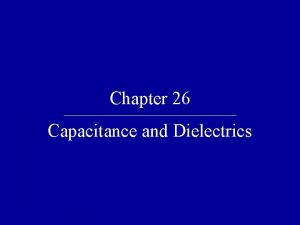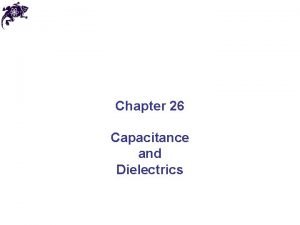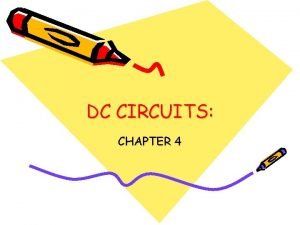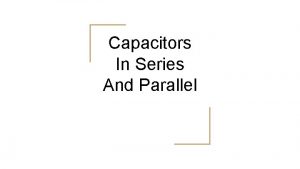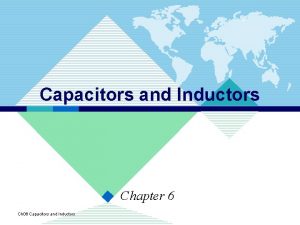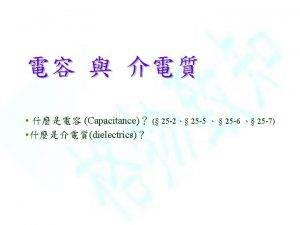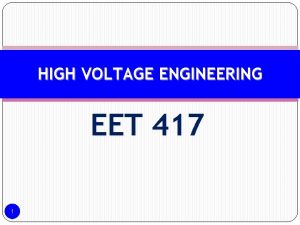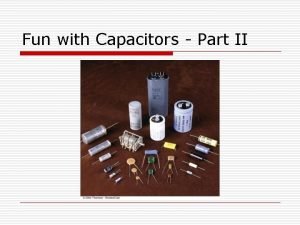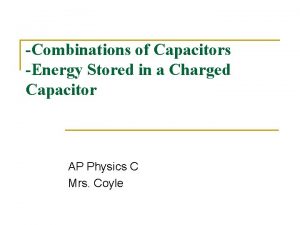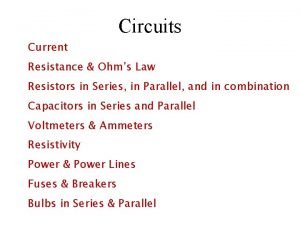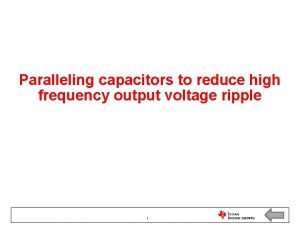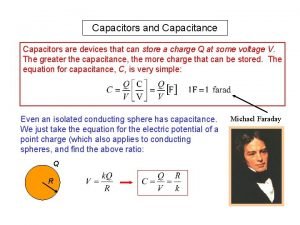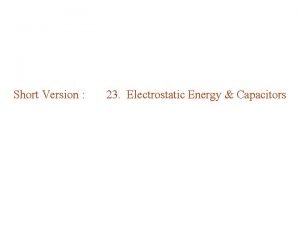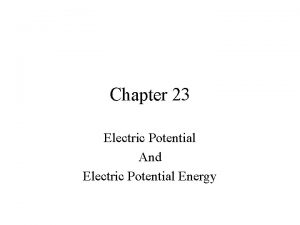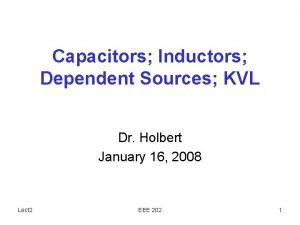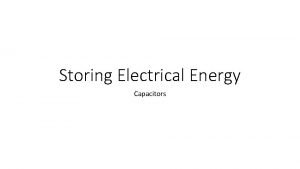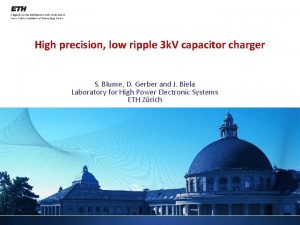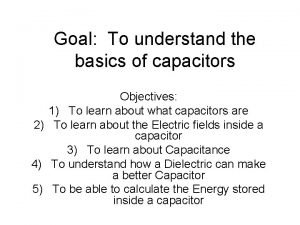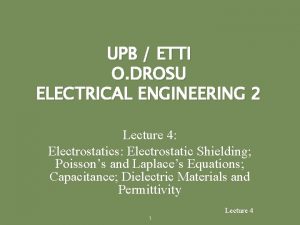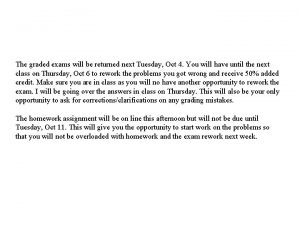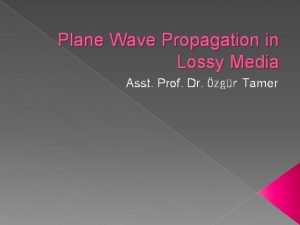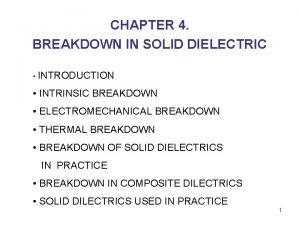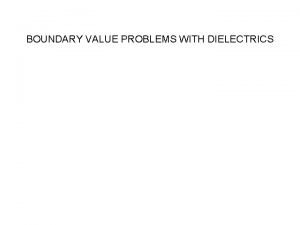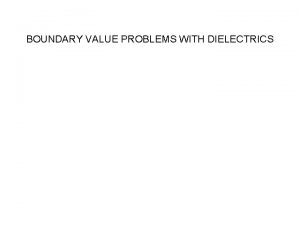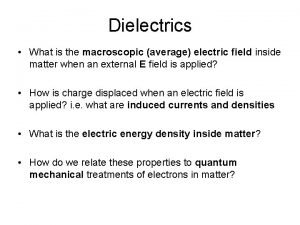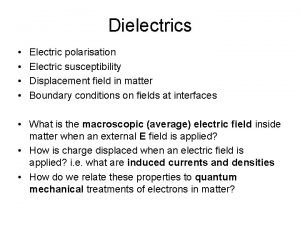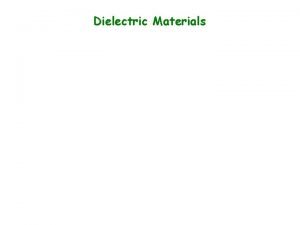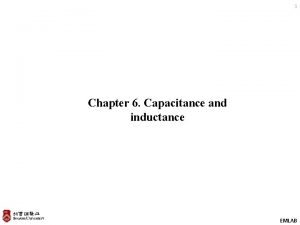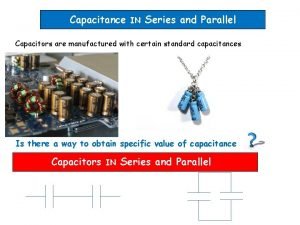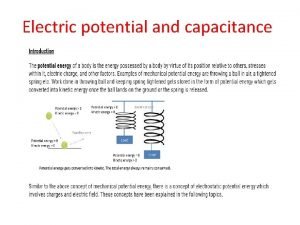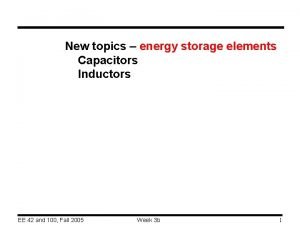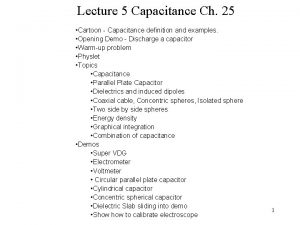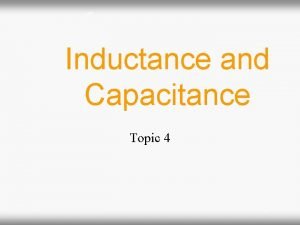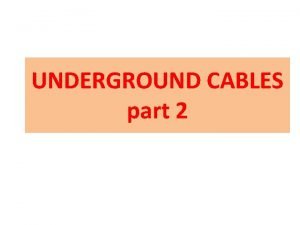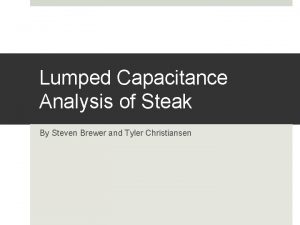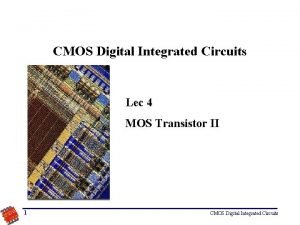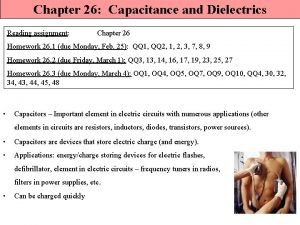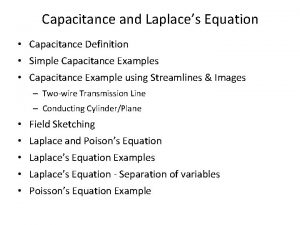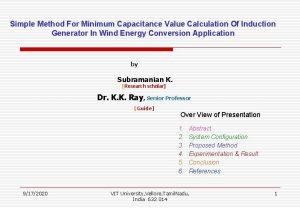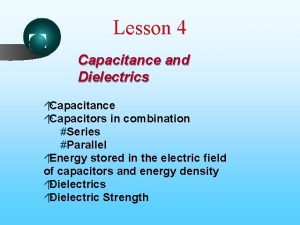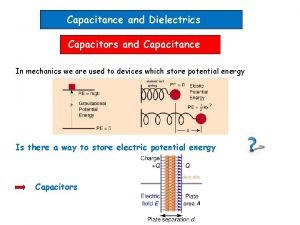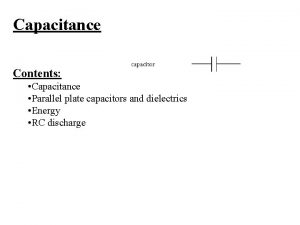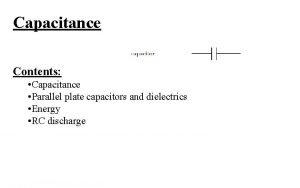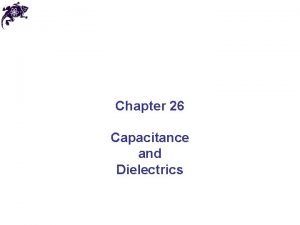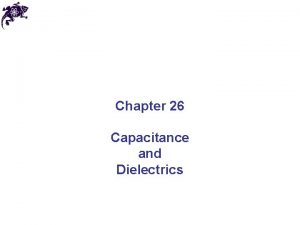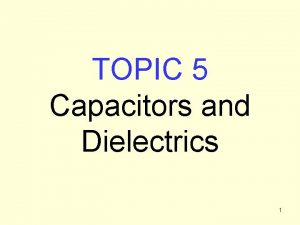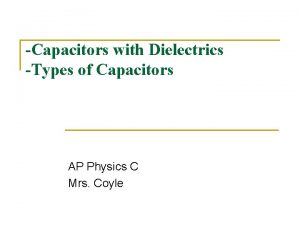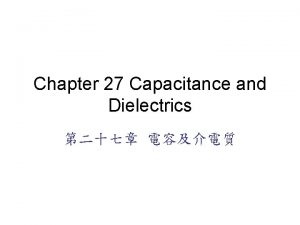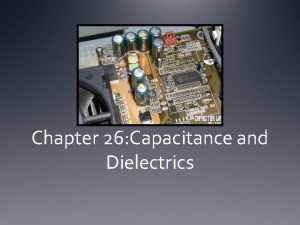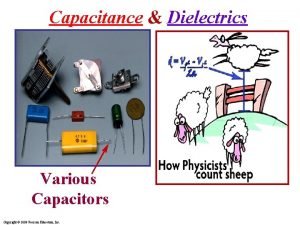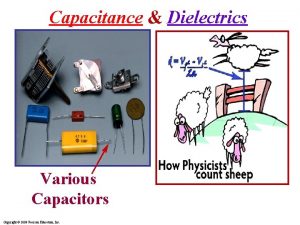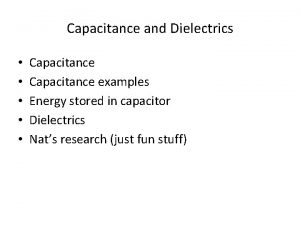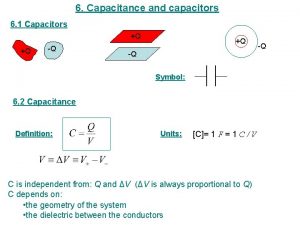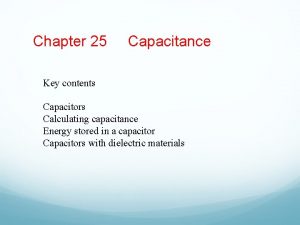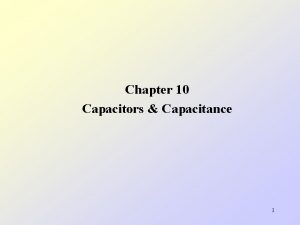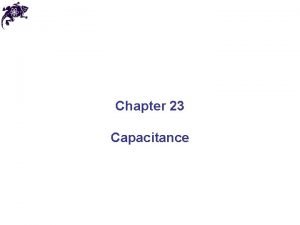Lesson 4 Capacitance and Dielectrics Capacitance Capacitors in











































- Slides: 43

Lesson 4 Capacitance and Dielectrics áCapacitance áCapacitors in combination #Series #Parallel áEnergy stored in the electric field of capacitors and energy density áDielectrics áDielectric Strength

Field above surface of charged conductor Field Above Conductor Q s E = Ae = e 0 0 Does not depend on thickness of conductor

conductor in electrostatic equilibrium s. A = e 0 =E ò ò E · d. A = closed cylinder ò Ed. A Area A E A d. A A s E = = Ae 0 charge =

E Charged Plates d +Q + -Q - W = Fd =QEd DU = -QEd = U- - U+ DV = -Ed =V- - V+

PD between Plates v. Potential drops Ed in going from + to - v. V- is Ed lower than V+

Work Done in Moving Charge ØHow does one make such a separation of charge? ØMust move positive charge ØWork is done on positive charge in producing separation +Q F Q -Q

Electric Field ØWhat forms when we have separation of charge? ØAn Electric Field +Q E -Q

áThe work done on separating charges to fixed positions áis stored as potential energy áin this electric field, which can thus DO work áThis arrangement is called a Capacitorb CAPACITOR

Moving Charge ØHow do we move charge? ØWith an electric field Øalong a conduction path

Picture

Charge Separation ØThe charge separation is maintained Øby removing the conduction path Øonce a charge separation has been produced ØAn electric component that does this is called A Capacitor

Capacitor Symbol

Battery Symbol + -

Can charge Capacitor a capacitor by Charging

ØPlates are conductors Capacitance ØEquipotential surfaces ØLet V = P. D. (potential difference) between plates ØQ (charge on plates) ~ V (why? ) ØThus Q = CV ØC is a constant called CAPACITANCE

SI Units

Calculation of Capacitance Øassume charge Q on plates Øcalculate E between plates using Gauss’ Law ØFrom E calculate V ØThen use C = Q/V

Capacitors

Electric Field above Plates

going from positive to negative plate Calculating Capacitance in General DV = V V = - E · ds £ 0 f f ò i In order that i E · d s ³ 0 choose path from + plate to - plate D V = - V ( PD across plates ) Thus V = ò - Eds (choose path + e 0 EA C = - ò + Eds || to electric field )

for Parallel Plates Capacitor Q EAe 0 EA e 0 Ae 0 = = C= = V Ed d Eds ò - +

for Cylindrical Capacitor Q 2 pe 0 L = C = æ bö V ln ç ÷ è aø • a = radius of inner cylinder • b = radius of outer cylinder • L = length of cylinder

Combination of Capacitors Combinations of Capacitors in Parallel equilibrium ØParallel Øsame electric potential felt by each element ØSeries Øelectric potential felt by the combination is the sum of the potentials across each element

Picture

Calculation of Effective Capacitance

Combination of Capacitors Series

Net charge zero Picture Why are the charges on the plates of equal magnitude ?

ØIf net charge inside these Gaussian surfaces is not zero ØField lines pass through the surfaces Øand cause charge to flow ØThen we do have not equilibrium Calculation of Effective Capacitance I

Calculation of Effective Capacitance II

Is this parallel or series? = Question I

Is this parallel or series? + - Question II + -

Work done in charging capacitor + - in Charging Work. I Done q Capacitor + -

Calculation

Energy Density

Dielectrics

Picture

Picture

Picture Polarization

Polarization Induced Electric Field

Dielectric Constant

Permitivity

Permitivity in Dielectrics For conductors (not dielectrics ) k =e =¥ For regions containing dielectrics all electrostatic equations containing e 0 are replaced by e e. g. Gauss ' Law F= ò E · d. A = surface Q e

Dielectric Strength ·The Dielectric Strength of a non conducting material is the value of the Electric Field that causes it to be a conductor. ·When dielectric strength of air is surpassed we get lightning
 Capacitor quiz
Capacitor quiz Capacitance and dielectrics
Capacitance and dielectrics Capacitors and inductors in dc circuits
Capacitors and inductors in dc circuits Capacitor series parallel
Capacitor series parallel I = c dv/dt example
I = c dv/dt example Polar and non polar dielectrics
Polar and non polar dielectrics Breakdown in liquid
Breakdown in liquid Treeing and tracking in solid dielectrics
Treeing and tracking in solid dielectrics Fun with capacitors
Fun with capacitors What is the energy stored in the combination of capacitors
What is the energy stored in the combination of capacitors Capacitors in series formula
Capacitors in series formula Paralleling capacitors
Paralleling capacitors Energy stored in capacitor formula
Energy stored in capacitor formula C=q/v
C=q/v Energy stored in capacitors
Energy stored in capacitors Kvl
Kvl Capacitance energy
Capacitance energy Flat ppr
Flat ppr The basics of capacitors
The basics of capacitors Gauss law in differential form
Gauss law in differential form Gauss law in dielectrics
Gauss law in dielectrics Plane wave propagation in lossy media
Plane wave propagation in lossy media Are dielectrics conductors
Are dielectrics conductors Thermal breakdown in solid dielectrics
Thermal breakdown in solid dielectrics Boundary value problems with dielectrics
Boundary value problems with dielectrics Boundary value problems with dielectrics
Boundary value problems with dielectrics Average electric field
Average electric field Define electric susceptibility
Define electric susceptibility Definition of dielectric material
Definition of dielectric material Equivalent capacitance in series
Equivalent capacitance in series Inductance capacitance formula
Inductance capacitance formula Capacitance in series and parallel
Capacitance in series and parallel Relation between capacitor and voltage
Relation between capacitor and voltage Potential and capacitance
Potential and capacitance Capacitor equations
Capacitor equations The effective capacitance between a and b is
The effective capacitance between a and b is Relationship between capacitance and inductance
Relationship between capacitance and inductance Properties of underground cables
Properties of underground cables Lumped capacitance model
Lumped capacitance model Energy electric field
Energy electric field Short channel effects in mosfet
Short channel effects in mosfet Effect of dielectric on capacitance
Effect of dielectric on capacitance Laplace's equation
Laplace's equation Minimum capacitance formula
Minimum capacitance formula
